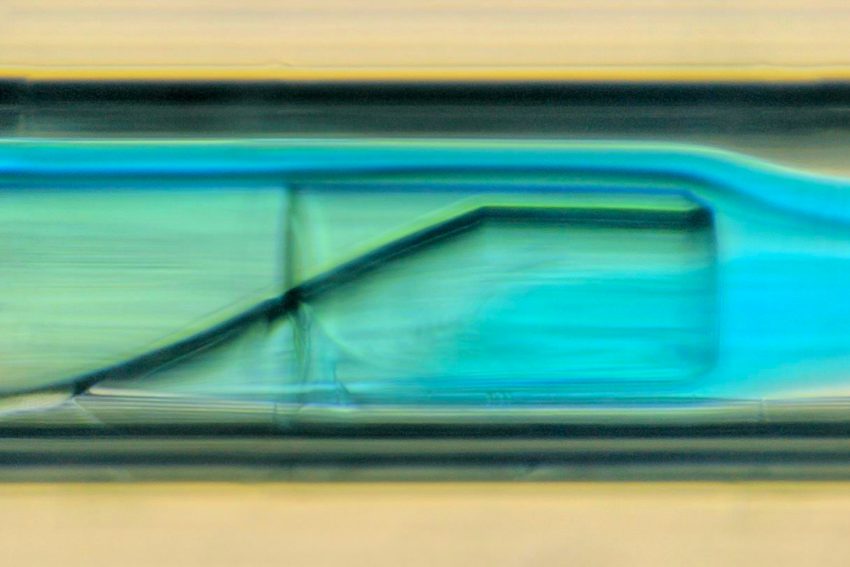Image of the Month March: 3D Microfluidics for Customized Nanoparticles Precise production of nanoparticles as carriers for low-solubility active ingredients
The picture shows a microscopic mixing channel for the production of nanoparticles as carriers for sparingly water-soluble active ingredients. The advantage of these carrier systems: As a result, the active ingredients can be better absorbed by the body or administered bypassing the gastrointestinal tract. The Institute of Microtechnology is conducting research into systems for producing nanoparticles with adjustable properties and a particularly narrow size distribution. In contrast to classical methods, microfluidics offers maximum control over the mixing process that creates the nanoparticles. Pharmaceutically relevant nanoparticles have already been produced in cooperation with the Department of Pharmaceutics (Professor Heike Bunjes and Juliane Riewe).

Mikrofluidic system, as used in the Institute of Microtechnology Mikrotechnik. Picture Credit: IMT/TU Braunschweig
The channel of the microsystem with injection nozzle and mixing elements was printed onto a glass substrate using a super high-resolution 3D printing process (2-photon polymerization). The channel has an inner diameter of 0.2 millimeters. The image was taken during a mixing experiment in which water and blue-colored ethanol were passed through the system. The blue-dyed stream connects to the main stream through an injection nozzle with an inner diameter of 30 micrometers. The 3D structure of the mixing elements increases the contact area between the two streams. This intensifies diffusion for faster mixing of the solutions.
The special feature of this new microsystem is that the 3D structures prevent lipid contained in the ethanol from coming into contact with the channel walls and sticking to them. This so-called fouling has been an unsolved problem in the production of nanoparticles in microfluidic systems. Fouling causes flows and mixing processes to become unstable, and the system can become clogged.
The lipid nanoparticles produced, ranging in size from 70 to 200 nanometers, also provide an option for injectable aqueous solutions of an active ingredient.
